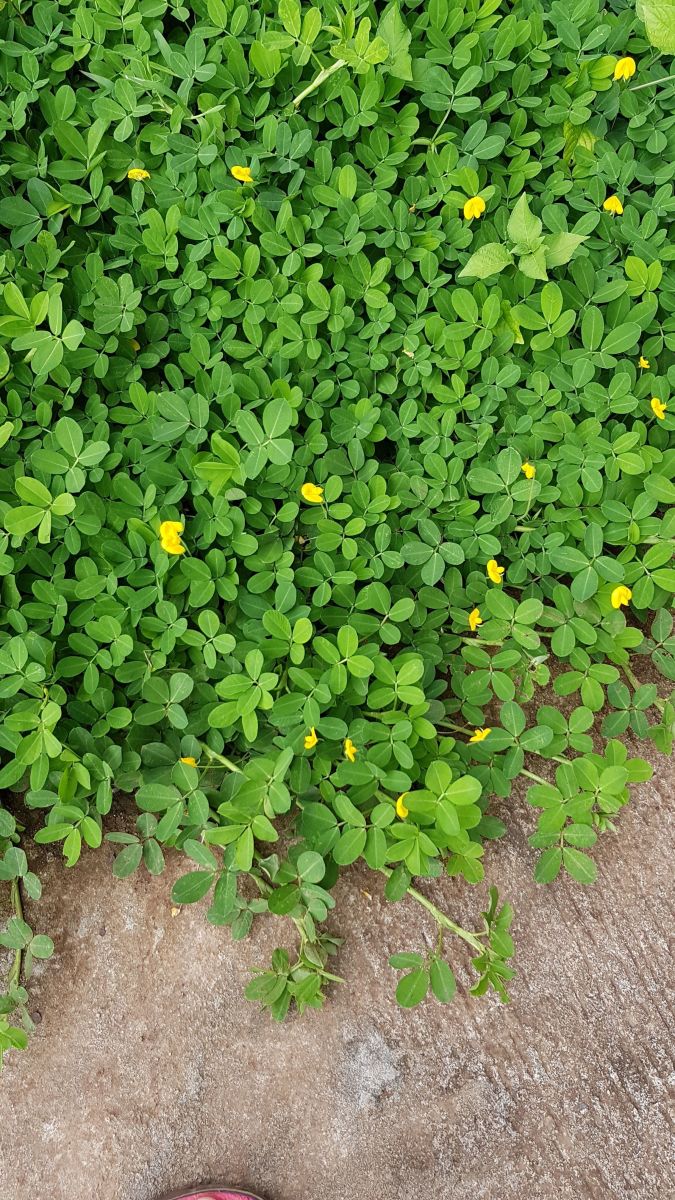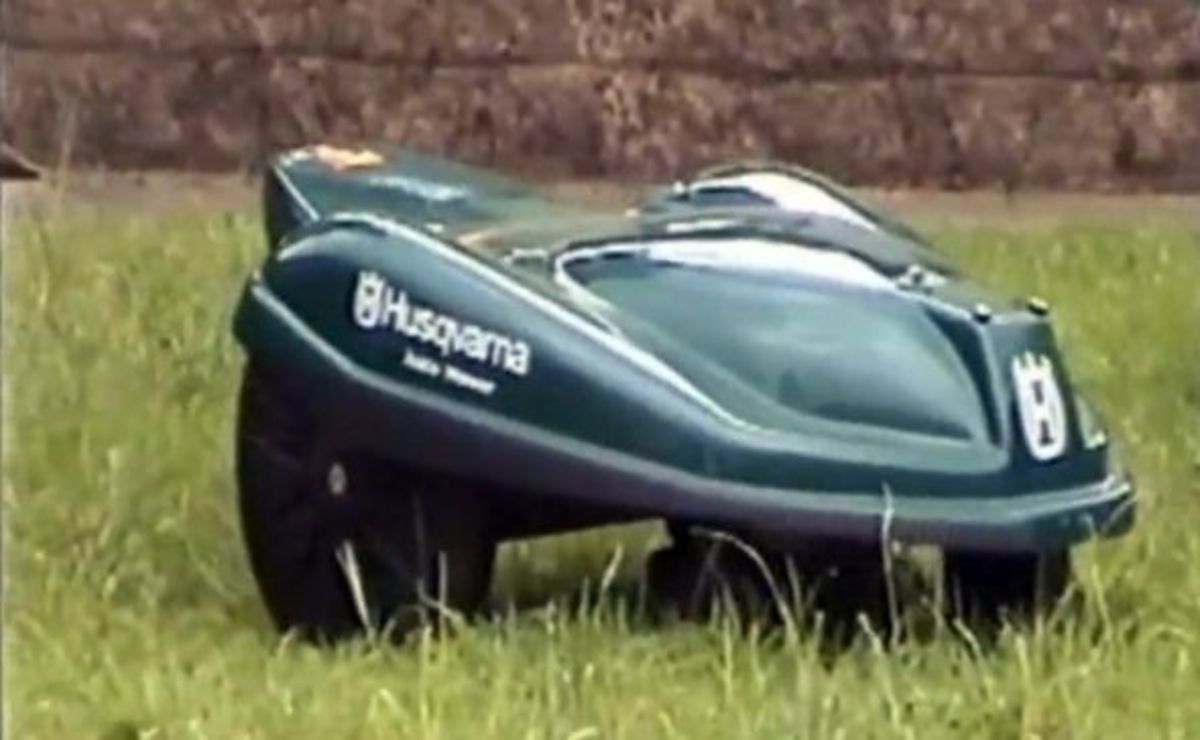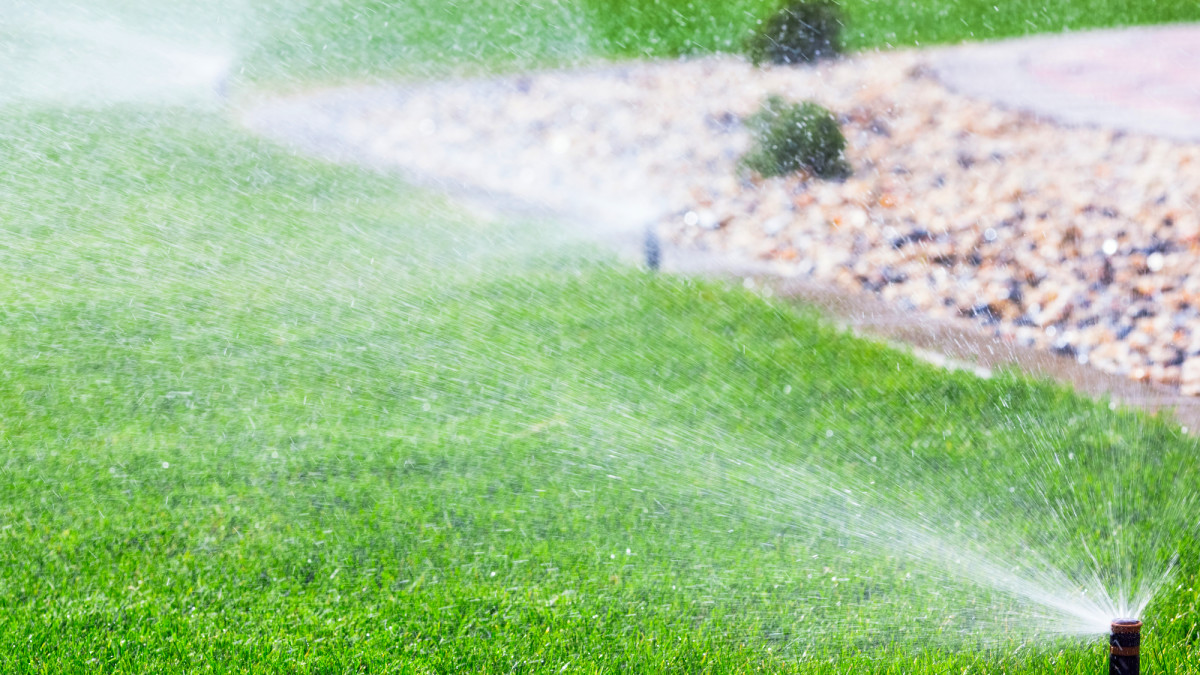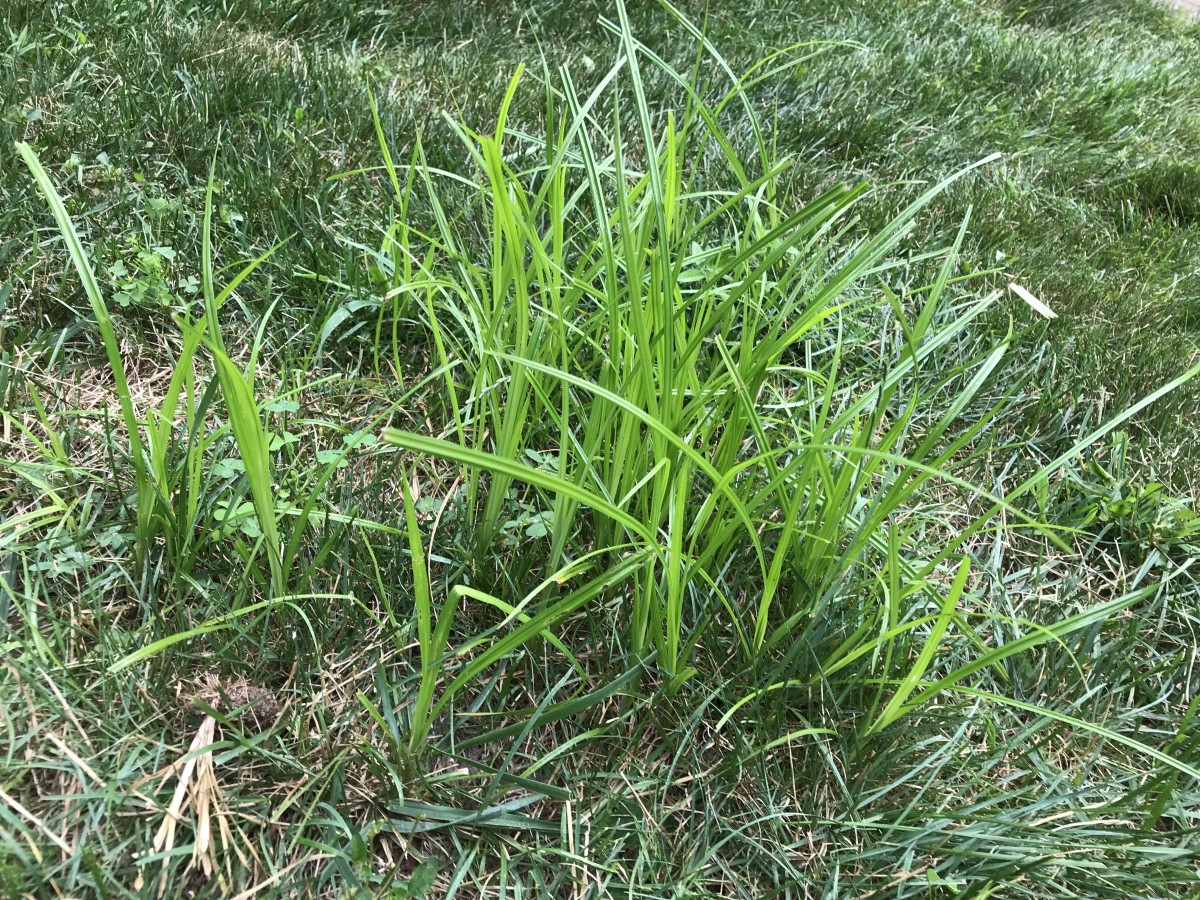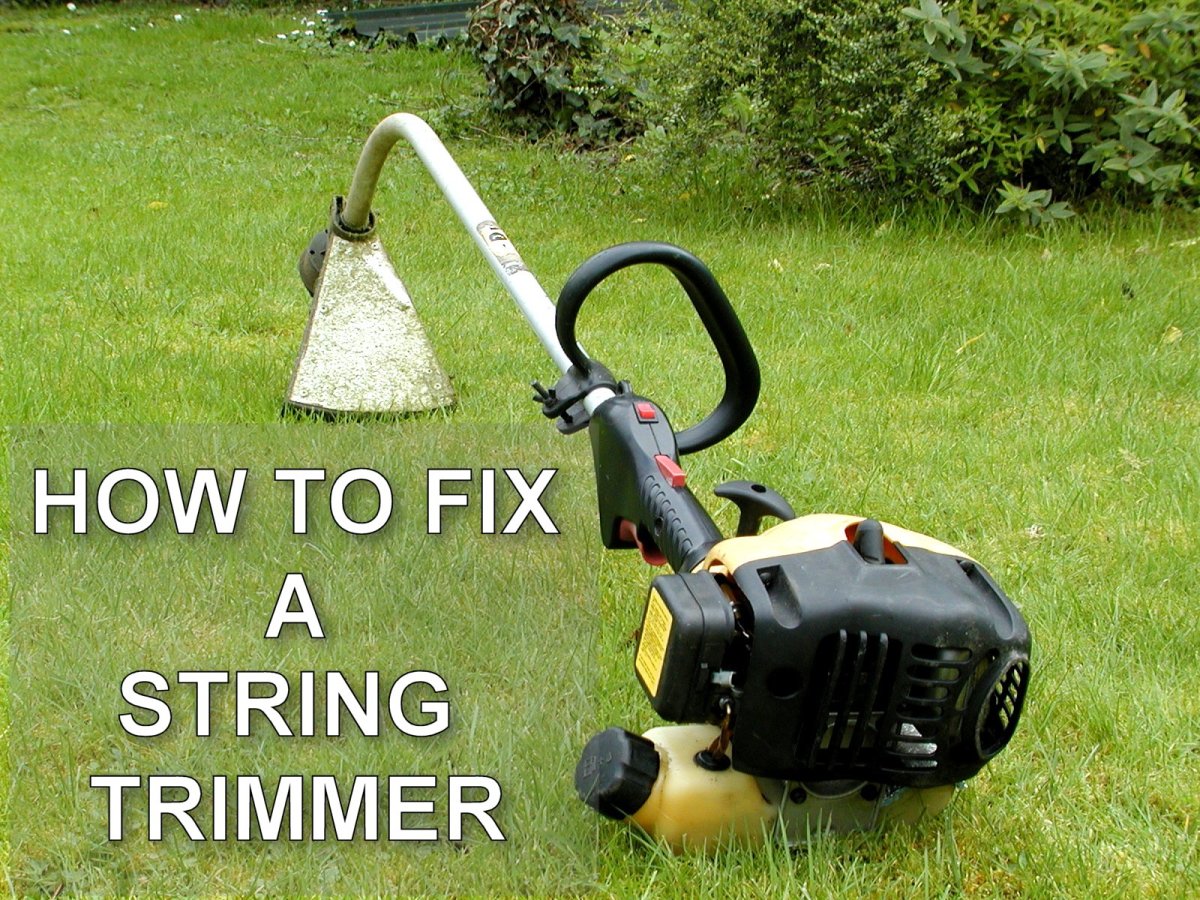Different Ways Turf Grass Benefits You and the Environment
Your Lawn is More Important Than You Think!
Often, we overlook how valuable our lawn is to our health and environment. After all, it only seems to turn green, grow and dry out. We then spend heaps of money to water, mow and fertilize it. So, many times we neglect our turf because it seems like a costly, high maintenance, worthless project.
But it is not worthless. It is invaluable.
In fact, your lawn may be one of the most valuable items on your property--a hidden gem you walk over every day. Besides increasing your property value upwards of 10 percent, grass can play a small part in a very large global affair: It cools the planet and reduces pollution caused by erosion and runoff.
A Green Roof in the City
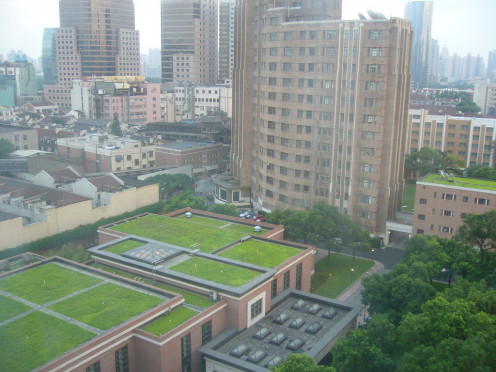
Benefit 1: Carbon Storage and Cooling Effects of Turf Grass
In a study, researchers in Canada found that a 6-inch deep green roof could reduce heat losses by nearly 30 percent and heat gains by 95 percent, according to Carolyn LaWell, author of the article "Wide Open Spaces" published in Lawn & Landscape.LaWell also noted that green roofs reduce smog up to 15 percent.
So, what are these green roofs and how do they relate to carbon storage and turf grass cooling?
Currently, one of the most unique trends in the turf industry is the development of green roofs. Many cities have begun to adopt roofs covered entirely in turf grass and other plants to reduce city heat and improve building quality. "There is no other type of building technology that provides the same scale and scope of benefits as does a green roof system," said Steven Peck, Founder and president of the organization GRHC.
Many cities, currently melting under rising temperatures, have realized how turf grasses can improve their air quality and reduce temperatures caused by air pollution and large amounts of concrete and asphalt. They want to use this emerging, green technology to reduce heat, improve air quality and control storm runoff.
The concept and current success of green roofs prove that turf grasses are much more valuable to our health and environment than we may have thought. You step out of your residence every morning and probably think little about how your front lawn can cool temperatures on a state, national or global scale. Those holes and burnt spots on your neglected lawn actually play a major role in the amount of oxygen your lawn fails to produce; and thus, its inability to cool even the environment around your residence.
Consider these statistics: A healthy lawn 50 feet by 50 feet can provide enough oxygen for a family of four. Or, in the summer, temperatures are 30 degrees cooler above a healthy lawn than they are above pavement. This cooling takes place by a process generated by the turf called transpiration, according to Buckeye Turf. Transpiration dissipates radiation; and thus cools temperatures.
Whether you believe in global warming, it's hard to argue the fact temperatures increase more above concrete and pavement than above turf and plants. Turf grass captures carbon dioxide, turns it into usable energy and then releases oxygen.
Many cities have begun to accept that increasing plant life is one of the most economically feasible ways to improve the quality of life and health of its population. Their acceptance has helped the green roof industry explode 28.5 % since 2010.
Who knows? These facts and concepts might also prove why some people are city folks, while others are not.
Comparing Surface Temperatures
Surface Type
| Average Temperature Above Surface (7 am- 7 pm)
|
|---|---|
Synthetic turf
| 117
|
Asphalt
| 109
|
Bare soil
| 98
|
Concrete
| 94
|
Turfgrass
| 78
|
Temperatures above turf grass are about 31 degrees cooler than they are above asphalt and 16 degrees cooler than concrete. (Table from: http://aces.nmsu.edu/programs/turf/documents/brigh...
Green Roof with Plants
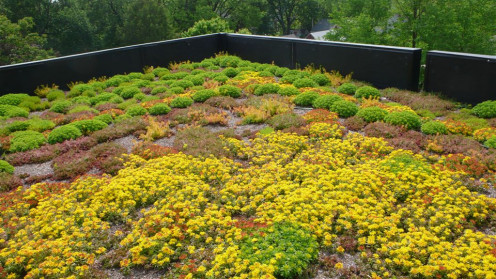
Overgrowth in Pond
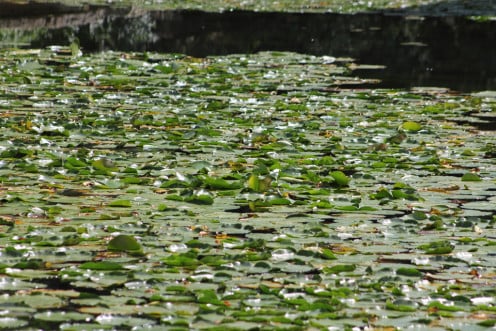
Using Rocks to Prevent Erosion
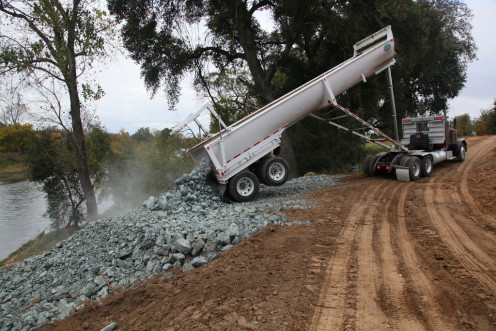
Benefit 2: Decrease in Soil Erosion and Runoff
Soil erosion and runoff can greatly damage the environments and ecosystems near and far from the main point of impact. Because of their nasty side effects, many turf professionals try hard to prevent these incidents from occurring. One way you can help prevent erosion and runoff is to grow healthy turf. Healthy lawns create stable soil; and thus help prevent pollutants and debris from leaching into nearby waterways or drainage systems.
But why should you worry about erosion and runoff? How does these affect you and your current lawn?
The simple answer is this: When you prevent runoff, you stop nasty chemicals and materials from streaming into the ground and drinking water. Imagine drinking that stuff? Further, runoff can cause plants to overgrow in bodies of water. This overgrowth extracts large amounts of oxygen that species need to survive. As one species dies, other species that depended on that original species to survive also disappear. It's not uncommon for many lakes to become totally uninhabitable because overgrowth killed off living species.
Many states have taken action to prevent the ill-effects caused by erosion and runoff by eliminating certain chemicals from general use lawn products. Eliminating unneeded chemicals may solve part of the problem, but it's not the ultimate solution. Instead, everyone must step in to prevent pollution. You can prevent water pollution by keeping harmful materials out of your nearby waterways and your drainage systems. It sounds easy, and many times it is. Start by growing a healthy lawn and using common sense techniques when spreading chemicals and fertilizers across your property.
Turf grass is like a natural mesh that knits soil together. First, this mesh prevents the soil from sliding and shifting. Many times highway crews use quick growing rye grasses on the side of highways to prevent soil from running down hills, onto highways or into drainage systems. Healthy turf grass then prevents runoff when it interferes with water as it hits the soil. This interference allows moisture enough time to soak into the turf.
To help decrease runoff or soil erosion always remember the following:
- Grow a healthy, thick lawn and keep it regularly watered and aerated. Ensure the soil is never bone dry or hard because water will runoff the soil's surface.
- Carefully spread seed or fertilizers. If turf overhangs an edge or a waterway, maintain a one to two foot border and don't get too close. Many professionals use the same technique when spraying herbicides around garden beds. They maintain a one foot border around the beds so they don't harm plants and flowers.
- Keep grass clippings on the lawn, but ensure they're not spread too heavy. Heavy clippings can kill grass because it decreases the amount of sunlight available.
- Clean off your driveway, sidewalks and streets if you accidentally spread fertilizer or pesticides onto those surfaces.
- Level off areas of your lawn where runoff occurs frequently. Leveling slopes where grass is present can actually improve the quality of that turf because it will intake more water.
- Divert water from running onto surface areas so it does not seep into drain sewers or local bodies of water. Instead, shift flowing water onto your grass.
How has soil erosion been solved on your property or a property you know?
Soil Erosion Exposes Tree Roots
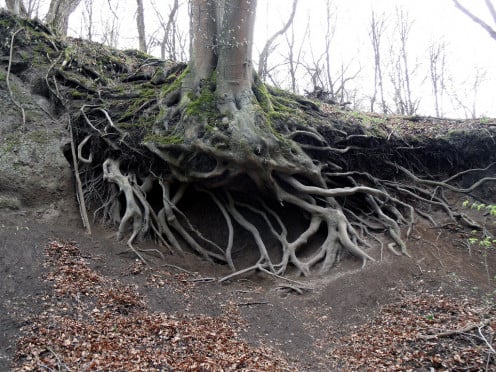
Soil Erosion and Runoff
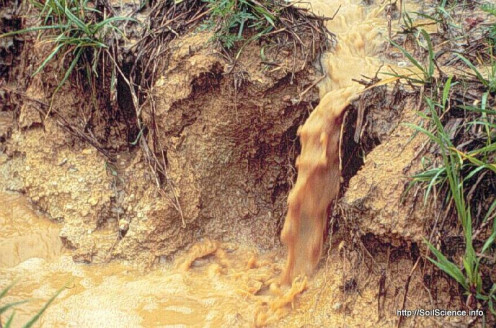
Turf Can Prevent Dust Storms
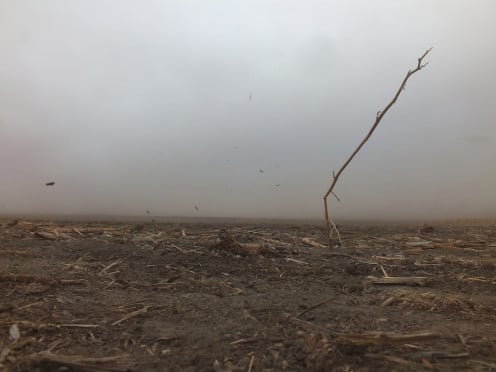
Citations
Benefits of turf. (n.d.). Retrieved from http://www.ohioturfgrass.org/?page=BenefitsofTurf
Control soil erosion and rainwater runoff.. (n.d.). Retrieved from http://mda.maryland.gov/resource_conservation/Documents/tip3.pdf
Positive benefits of turfgrass. (n.d.). Retrieved from http://archive.lib.msu.edu/tic/mitgc/article/199273.pdf
Sheratt, P. (2011). The benefits of turf. Retrieved from http://www.stma.org/sites/stma/files/Technical_Resources/OSU_Benefits_of_turf.pdf
Turf protects the environment, benefits health. (n.d.). Retrieved from http://agops.ucr.edu/turf/topics/turfprotects.htm
Williams, C. F., & Pulley, G. E. (n.d). “synthetic surface heat studies”. Retrieved from http://aces.nmsu.edu/programs/turf/documents/brigham-young-study.pdf
© 2014 Frank Sturm


